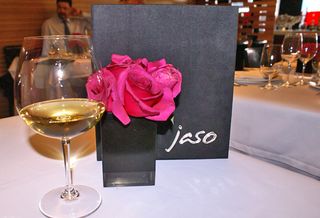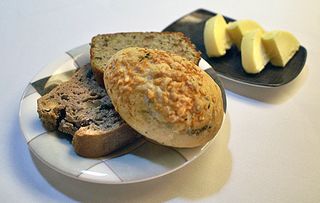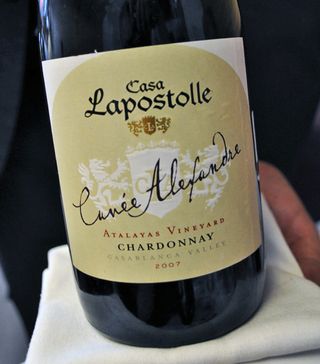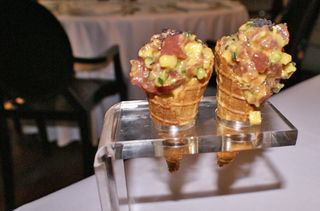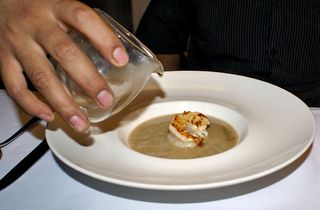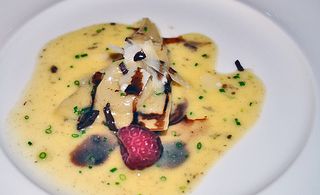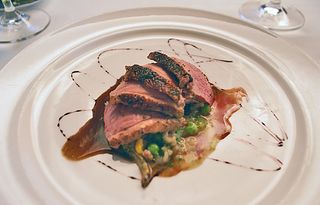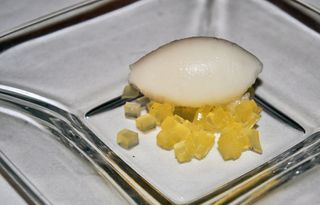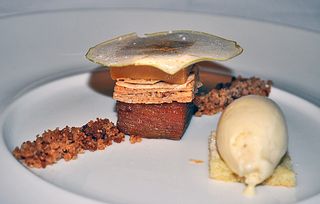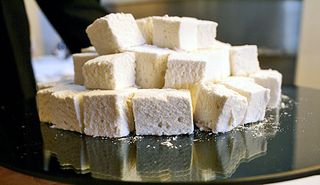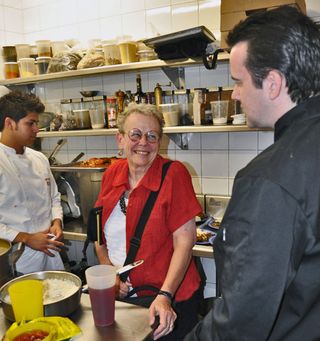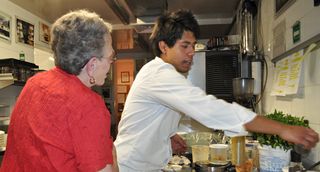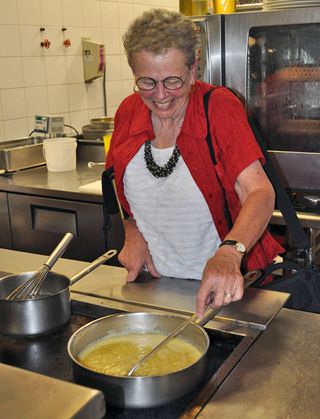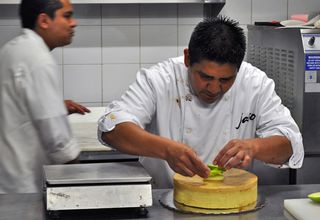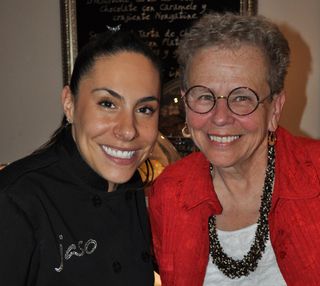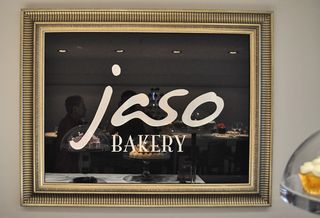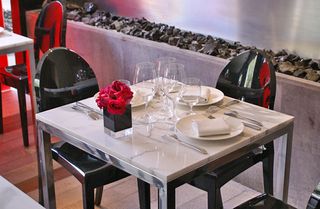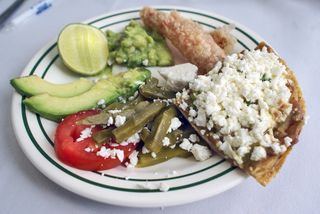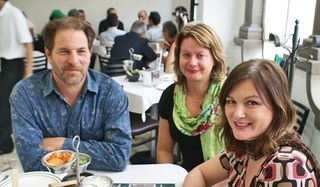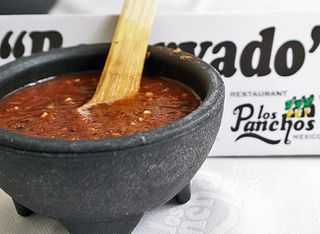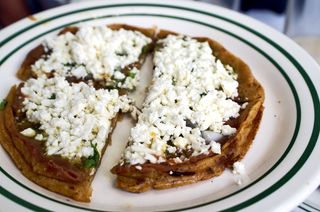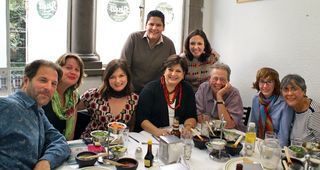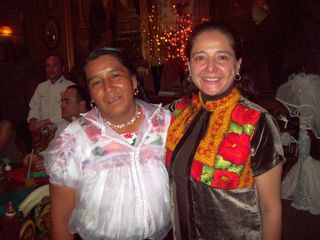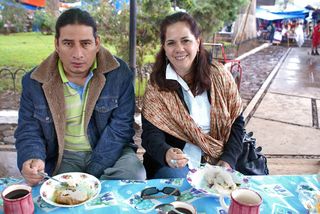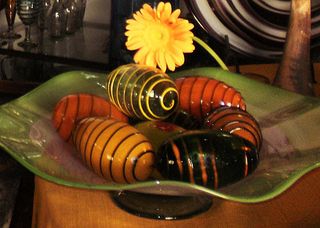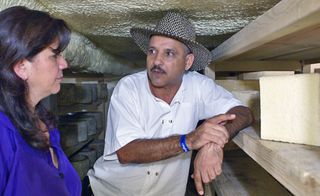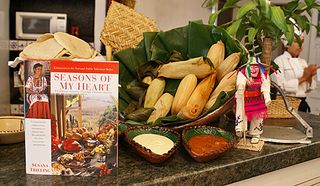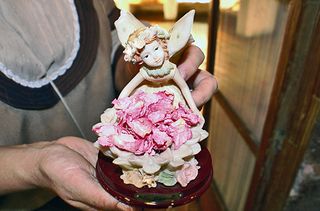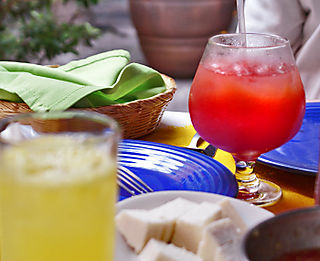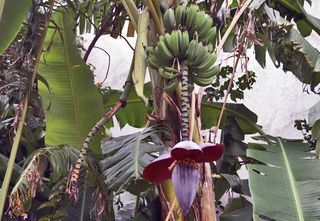
We'll start off with a gimme: everybody recognizes bananas–the green fruits hang from the long knobby stalk. The pointed reddish-purple part at the bottom of the photo is the banana flower. Click on the photo to better see the tiny purple-yellowish florets just under the extended portion of the flower. That's the part of the flower that matures to form the actual banana fruit. In India and in Thailand, those tiny flowers are prepared as delicious dishes. I don't know a Mexican recipe for them–do you?
Mexico is home to some decidedly unusual fruits (no smart remarks, please). Many of these fruits are unavailable in other parts of the world, but it's certainly worthwhile to learn that they exist and are wonderful to taste.
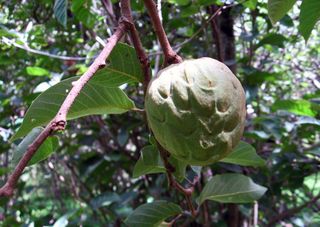
This is a chirimoya (Annona Cherimolia), sometimes known in English as a custard apple. Its size ranges from that of a baseball to much larger. I once picked one that was almost the size of my head, carried it by hand from the Michoacán mountains to Mexico City, allowed it to ripen fully, and shared it with my friend Celia Gutiérrez.

When ripe, the chirimoya's flesh is soft, yielding easily to a spoon. The taste is like a combination peach and strawberry: absolute heaven. The fruit is picked while immature and ripens quickly in a sunny window or on a kitchen counter. Originally brought to the New World by the Spanish conquistadores, these are available in Mexico primarily during their relatively short summer season.
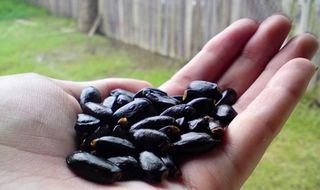
The seeds of the chirimoya are large, black, and shiny. Occasionally you'll find a sprouted seed inside one of the fruits; I've tried to grow a tree but have had no luck.
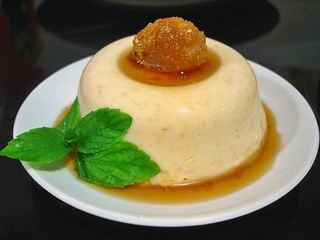
Mousse made of chirimoya and cream. Photo and recipe courtesy this website.
Mousse de Chirimoya
Serves six
Ingredients
1 ripe chirimoya (300 or 400 gr.)
1/4 Cup heavy cream
2/3 Cup whole milk
1leaf of unflavored gelatin
1 Tbsp sugar
Decoration
I or 2 white grapes per individual mousse
2 Tbsp dark brown sugar
1 Tbsp dark rum
Sprigs of fresh mint
Procedure
Cut the chirimoya in quarters and carefully remove the seeds. Put the chirimoya flesh into your blender jar.
In a heavy saucepan, heat the milk, the cream, and the sugar. Stir constantly to make sure that the mixture does not stick. Dissolve the gelatin in cold water.
Once the mixture begins to cook, add the dissolved gelatin. Allow the mix to cook for a minute more, without moving the saucepan from the burner. After a minute, take the pan off the fire and allow the mixture to cool.
Once the mixture is cool, pour it into the blender along with the chirimoya flesh. Blend until the mixture is smooth and silky.
Pour the mixture into individual-serving ramekins and chill in the refrigerator for at least four hours before serving.
To make the grape garnish, roll each grape first in the rum and then in the brown sugar. Prepare the garnish just before serving. Unmold each ramekin onto a small dessert plate and top with one or two grapes, a small spoonful of rum, and a sprig of fresh mint.
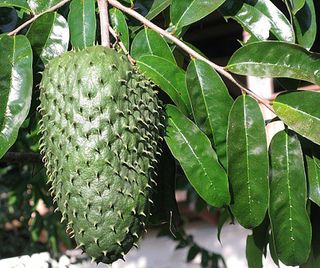
The guanábana (Annona muricata), known in English as the soursop, is related to the chirimoya. The flesh is white and the large seeds are black, like those of the chirimoya. When ripe, the guanábana has a somewhat more acidic flavor than its cousin, although it is still sweet and delicious. It's easy to tell these two similar fruits apart: the guanábana is the one with the big soft thorns! In Mexico, guanábana is most often used to make a refreshing agua fresca (fresh fruit drink) or equally refreshing paletas (fresh fruit ice pops).
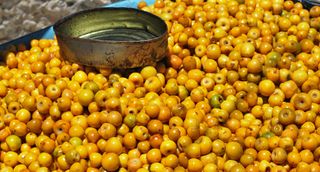
These olive-size yellow fruits are nanches (Byrsonima crassifolia), also known in Michoacán as changungas. These fruits grow and are extremely popular in Michoacán. They're sold by the plastic cupful in markets and at street stands, usually topped with a squeeze of lime, a pinch of salt, and a squirt of bottled salsa. Sorry, gang, Mexico Cooks! seems to be one of the few people in Michoacán who really, really doesn't like changungas. More for you!
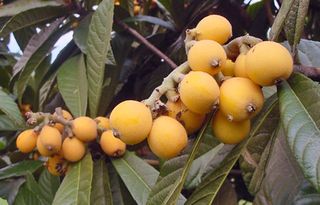
Similar in size and appearance to nanches, these are nísperos–otherwise known as loquats (Eriobotrya japonica). Not usually grown commercially, they are nevertheless commonly home-cultivated in Mexico's Central Highlands. In our neighborhood, it's a race to see who gets to the fruits first: birds or humans. We humans generally eat them out of hand, but they can be made into jam or conserve.
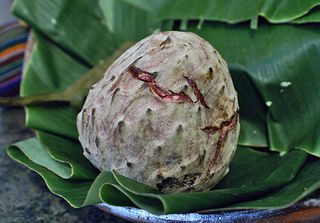
This, ladies and gentleman, is the illusive ilama (Annona diversifolia). Yet another relative of the chirimoya, the softball-size ilama grows wild in Michoacán's Tierra Caliente. Its season is very short, just a few weeks during the summer, and it is normally harvested only when it cracks. I was privileged to taste and photograph my first ilama this summer.

There are two kinds of ilama, the white and the pink. This is the pink variety. The skin is about double the thickness of the chirimoya skin, and the seeds are spherical and brown rather than black. Some ilama trees bear no fruit during their season; others bear just a handful of the fruits.
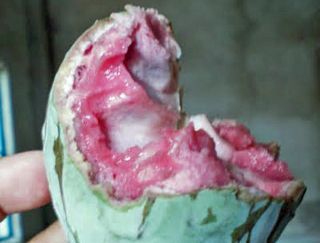
Sr. Juan Cortés, the friend who gave me the ilama, said that the ripe fruit is usually just chilled, broken open, and eaten out of hand. It was delicious, with banana/pineapple flavor notes. Sr. Cortés also mentioned that the ilama isn't grown commercially in Michoacán; in order to eat one, it's necessary to go to the hills of the Tierra Caliente, find a tree, climb it, and cut the fruit yourself. Given that summer temperatures in the Tierra Caliente can reach 115°F, it's highly unlikely that I will be clambering about to harvest an ilama. I was extremely grateful for Sr. Cortés' generous gift.
Looking for a tailored-to-your-interests specialized tour in Mexico? Click here: Tours.
In fact, every now and again Mexico Cooks! still learns of a new fruit that grows in this part of the country.
